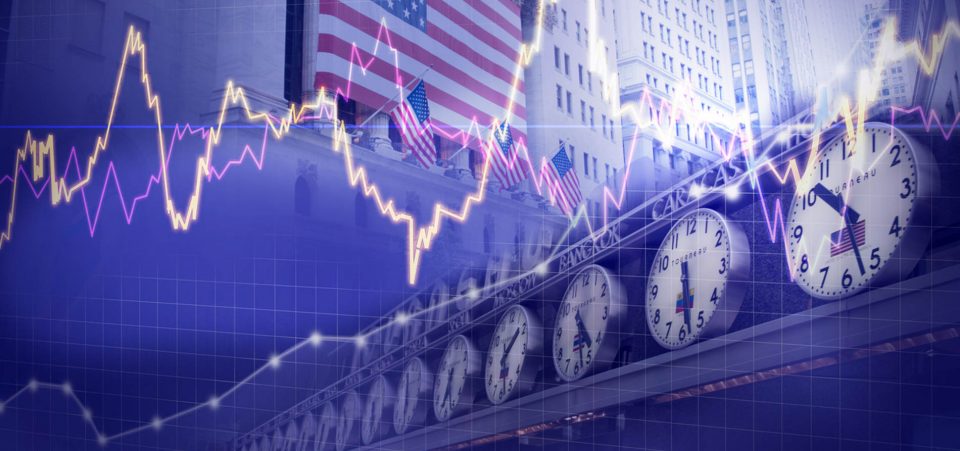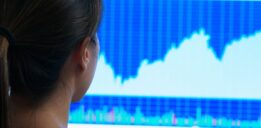Hard As They May Try, Recession And Subsequent Market Collapse Are Unavoidable
Recession is a dirty word in economic circles. It’s treated like the plague even though it’s a natural and healthy component of the business cycle. Central banks do anything to avoid recessions, even though stimulus and cheap money solutions sacrifice the future. But decades of neo-liberal fiscal policy is starting to haunt America. Everything from stratospheric public debt to record wealth inequality is taking its toll. Cheap money has allowed the world’s biggest casino to thrive again. But when the hangover arrives—manifesting itself as recession—an epic market collapse could result.
It may seem like I’m stating the obvious. Recessions always hammer stocks in profound ways. But the difference this time is that few see it coming. Unlike the Tech Bubble and U.S. Housing Bubble, there is no obvious catalyst for market collapse.
In those previous two bubbles, the craziness was there for all to witness. Investors understood that the price-to-earnings ratios of internet stocks were obscene. Investors also largely understood that Collateralized Debt Obligations (CDOs) were a ticking time bomb. Investors participated regardless, believing they could sell before the next person did. The few who succeeded came out like bandits.
Also Read:
Is There a 70% Chance of Global Recession in 2017?
The Upcoming Economic Recession in 2017 Has Already Begun
But in this bull market cycle, the danger isn’t as apparent. Sure, investors understand stocks are pricey. But there’s no “supernova” parabolic price action to get the chattering classes talking. Not in stocks anyway, although Bitcoin and Ethereum fit that profile.
This is the “everything bubble,” where a broad-based collection of stocks are just plain expensive. In most cases, not eye-poppingly expensive like we saw in internet stocks two decades ago. However, it’s expensive enough that collectively, the market is the second priciest on record.
A widely-followed indicator confirms as such. The “CAPE” ratio is an acronym for “Cyclically Adjusted P/E” ratio. It compares a stock’s price performance relative to earnings over a 10-year period. It’s highly regarded because it smooths out earnings volatility and adjusts for inflation. Right now, it’s screaming “sell.”
In the history of the stock market, the CAPE ratio has only been more expensive between June 1997 to September 2001. It’s topped over 30 now, breaking even the gaga days of the 1920’s mania. Along with it, the “Panic-Euphoria Model,” which is the S&P 500 forward P/E-to-volatility ratio, is also at its second highest point in history, showing how euphoric investors are really feeling. By almost any measure, the market is historically expensive. (Source: “Probably Nothing,” Zero Hedge, June 18, 2017.)
Yet, investors seem to be sleepwalking their way into unreality. Record inflows into U.S. equities keep occurring, allowing this magic levitation ride to push forward. Sell-inducing volatility surges only last a session or two, then die off. U.S. stock have climbed the biggest wall of worry in history, and show no signs of quitting. Equity overvaluation, the threat of trade wars, tepid growth, record public debt…the list goes on.
While all those “worries” haven’t slowed down the market, one factor surely will. That is, an earnings-busting recession that will send sky-high valuations crashing back to reality. This will almost assuredly be the market’s kryptonite. We’re at the point where valuation expansion sans earnings has gone as far as it can go. Some research has indicated that of the $6.7 trillion in enterprise value added to the S&P 500 since 2013, only six percent is attributed to after-tax earnings growth. The rest is attributed to debt and inorganic valuation increase. (Source: “Hidden Trigger For Another (Flash) Crash: Passive Investing,” Forbes, July 20, 2017.)
Obviously, that isn’t sustainable. At some point, the stock market will require a reason to move higher. Sure, it might grind up a few more percent over the course of several months, but the big gains have already been realized. The drip inflows and cheap money can only take it so far. If the business cycle has really peaked, the time to get defensive is upon us.
Market Collapse Scenarios
While some investors believe the business cycle can grind on ad infinium, recession risks are actually growing. It won’t happen in 2017, but sometime in 2018 is a distinct possibility. Below, I outline three different scenarios which could lead there (beyond the flip-side result of a mature business cycle).
The operating assumption is that stock market valuations will absolutely tank if recession takes hold, because earnings could easily fall 50%-70% or more. During the U.S. Housing Bubble, S&P 500 earnings fell 95% at its low point. With U.S. equities so expensive, it’s hard to envision a different result.
Below are some plausible risk events that could usher in recession sooner than expected.
Scenario #1 – Fed-Driven Consumption Decline
The Federal Reserve is hell-bent on raising interest rates. It’s already raised the Fed Funds rate three times since December 2016, and is poised to keep going. With every new rate hike, the yield curve comes closer to inverting. But just as importantly, higher lending rates are impacting a price-sensitive consumer.
There’s already evidence that higher relative rates are affecting consumption. Things like auto loans and mortgages saw steep demand declines when the benchmark 10-year bond yield increased 30% from November 2016 to March 2017 after the election of Donald Trump. While it’s beyond the scope of this piece to reference the hard data, common logic will suffice.
If historic and long-lasting cheap interest rates failed to move the U.S. economy past stall-speed growth from 2010-2017, what do you think higher rates will do to demand? Answering that simple question is all that’s required to understand how higher rates will impact consumers. It also exemplifies how fragile this “recovery” really is.
Scenario #2 – Stock Market Collapse
Another recession possibility is one driven by a preemptive stock market collapse. Think of this as the wealth effect in reverse. If investors start to experience sharp, negative returns on their equity, consumer spending could be impacted regardless of where interest rates move.
This recovery, in particular, has been fueled by the top 20%. Most of the wage gains and asset captures (equities, real estate) have occurred in this tier. If asset prices collapse, it could cause a serious spending slowdown with the class of people most responsible for the recovery.
With U.S. GDP growth only growing between 1.5%-3.0% for the last seven years, there’s not much buffer remaining. The “wealth effect” the Fed strived to create has boosted the recovery. But the market that gives can also take away. This is why the Fed is so worried about a large stock market decline.
Scenario #3 – Import-Export Driven Recession
Whether you’re for or against the current American administration, the fact remains, trade could be largely impacted. Trade as a percentage of total GDP accounted for 28% of America’s economy in 2015. Even a marginal decline in these numbers could erode the two-percent buffer GDP is growing at right now.
While Donald Trump’s sparring with China has received the most attention, trade with traditional allies could be impacted. America is currently engaged in NAFTA renegotiations with Mexico and Canada, much to the disdain of both parties. Nobody knows whether tighter trade restrictions will follow.
But perhaps less publicized is the growing spat between America and the European Union. Whether it is Trump’s insistence that Europe pays its “fair share” of North Atlantic Treaty Organization (NATO) dues, or threats of retaliation for U.S. sanctions against Russia, the ideological rift is gaping. This could easily spill over into a tit-for-tat trade standoff where nobody comes out ahead. Combine this with ratcheted-up tensions with America’s other biggest trade partner, China, and trade could easily tilt in the wrong direction.
While recession would invariably occur anyway, these scenarios add accelerating catalysts to the mix. Whatever the ultimate cause though, the stock market will get hammered once a recessionary cycle arrives.







